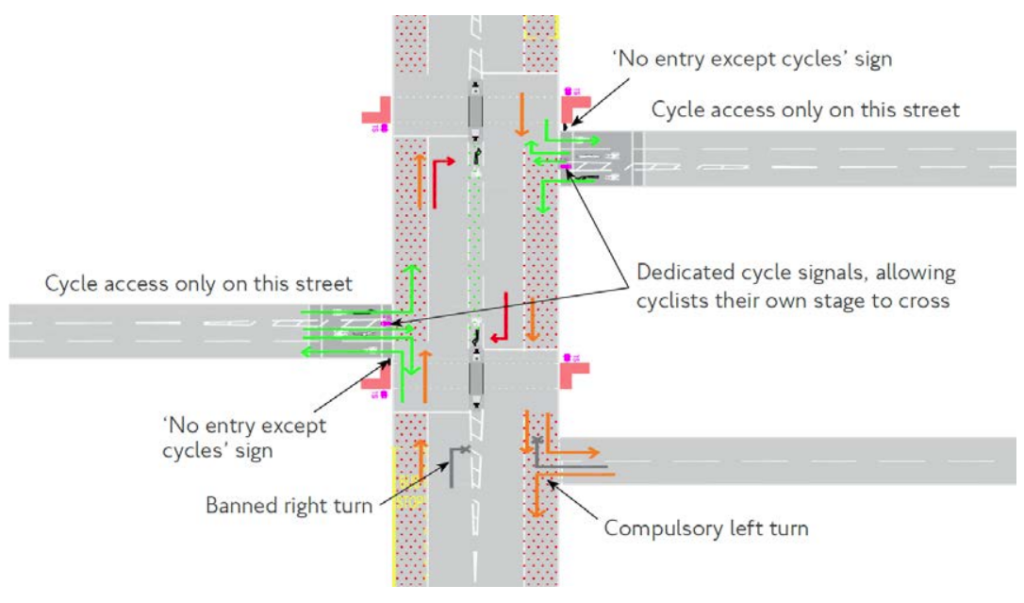Strategy Behind the Standard
The Cycling Level of Service (CLoS) tool and the Junction Assessment Tool (JAT) are assessment techniques provided through LTN 1/20 that offer a framework to ensure that a scheme conforms to good practice and that it is accessible and safe, giving local authorities flexibility on design of infrastructure, whilst ensuring that there is an objective and measurable quality threshold.
The CLoS tool provides a simple scoring assessment based on attributes of the five design criteria, which can be used to identify strengths and weaknesses, and therefore what the design needs to address. The tools includes some factors that are considered to be ‘Critical Fails’ – results that represent unsafe conditions for cycling which must be addressed.
When using the CLoS tool, it is worth considering that a cycle route may consist of different types of infrastructure along its length. It may therefore be necessary to split the route into consistent sections (in terms of design) and then assess each section independently. It may only be necessary to assess the more problematic sections to analyse the type and severity of the issues, on the basis that the overall quality of the route is determined by its constraints.
The JAT considers that the safety risks are highest and the relationships between safety and, comfort and directness are more complex at junctions. The tool enables designers to assess how well a junction provides for cycling. The JAT examines all potential movements at a junction, not just those that may be associated with a designated cycle route, to identify the potential for conflicts and therefore what measures may be required to reduce them.

Best Practice Guidance to be used by Essex Highways
All cycle routes that require external funding will need to use and pass the 70% threshold in the CLoS tool, a template for which, based on the LTN 1/20 example, can be downloaded from the link below.
For the JAT, all junctions that are being proposed and require external funding need to have no red-scoring movements. Instructions for using and implementing the tool can be found in LTN 1/20 Appendix B.
ECC Recommendations
When using the CLoS tool, it is worth considering that a cycle route may consist of different types of infrastructure along its length. It may therefore be necessary to split the route into consistent sections (in terms of design) and then assess each section independently. It may only be necessary to assess the more problematic sections to analyse the type and severity of the issues, on the basis that the overall quality of the route is determined by its constraints.
How the Standard Should be Applied
Only schemes with a minimum score of 70% and no ‘Critical Fails’ under the CLoS, and under the JAT no red-scored turning movements will generally be considered for funding, and therefore only those will be considered for Essex. Where schemes are proposed that do not meet these minimum criteria, the design choices will need to be justified with the project sponsor through the departures process. It still gives local authorities flexibility on design of infrastructure, but sets an objective and measurable quality threshold.
